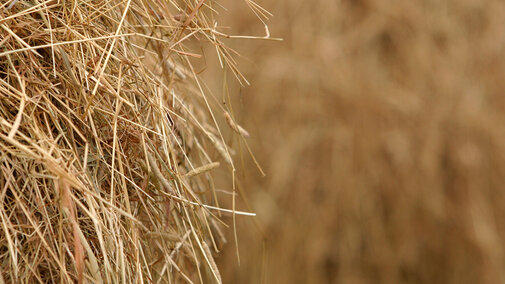Reducing Hay Feeding Losses
Hay is expensive and many long hours go into harvesting, storing and feeding it. Don’t waste up to a third of it by using poor feeding practices.
Believe it or not, cattle can trample, overconsume, manure on, and use for bedding 25% to 45% of your hay when it is fed with no restrictions. Extra control in feeding can pay off big time with that expensive hay.
For starters, don’t provide more than one day’s supply at a time. Research has shown that when cows are fed a four-day supply, they will overeat and waste 20% to 30% more hay than when they are fed one day at a time. This adds up to $50 to $75 more per cow over a four-month feeding period. Best of all is to feed only what the livestock will clean up in one meal, so nothing is left over to be wasted. Be sure to provide sufficient space for all animals to eat at once so boss cows don’t stop timid cows from getting their fair share.
Another thing you can do is restrict access to hay. Use bale racks or rings to keep animals off the hay. Especially useful are racks with barriers around the bottom that prevent livestock from pulling hay loose with their feet and dragging it out to be stepped on. If you unroll bales or grind and feed on the ground, position an electric fence alongside or above the hay to keep cows from trampling or bedding down on the hay.
As always, feed a balanced ration that provides sufficient energy and protein, but not too much. Animals that eat more protein than they need will simply excrete it as extra nitrogen in their urine. This is just as wasteful as directly trampling it into the ground.
Interpreting Forage Quality of Grass Hay
Have you ever tested the quality of your grass hay and been disappointed at the low relative feed value? Well, maybe your worry is unnecessary.
Producers testing prairie, cane or other grass hay can be confused when the hay itself looks really good, but when a lab tested it, the relative feed value (RFV) was surprisingly low. Numbers came back in the 70s or 80s. Is something wrong with the hay?
Actually, things may be just fine. You see, relative feed value was initially developed primarily to test legumes like alfalfa for the dairy industry. It used two types of fiber, the ADF and the NDF to calculate the RFV score. The NDF helped estimate intake and ADF estimated energy.
However, this system assumed all fiber had the same digestibility. We know that is not true, and it especially misrepresents the forage quality of grasses. Grasses have more fiber than legumes but grass fiber usually is more digestible than legume fiber. So, grass hay frequently is ranked lower than it should be using relative feed value.
Fortunately, researchers quickly became aware of this issue and developed another test that better measures digestible fiber, thus doing a better job of estimating forage quality of grasses. This test is called relative forage quality, or RFQ for short.
It’s also good to note that neither RFV nor RFQ are very useful in planning animal rations — they are best used to benchmark your production, comparing hay at market, and as a quick identification to allocate hay to different types of animals.
So, the next time your hay test comes back and the RFV seems a bit off, focus on RFQ instead.

